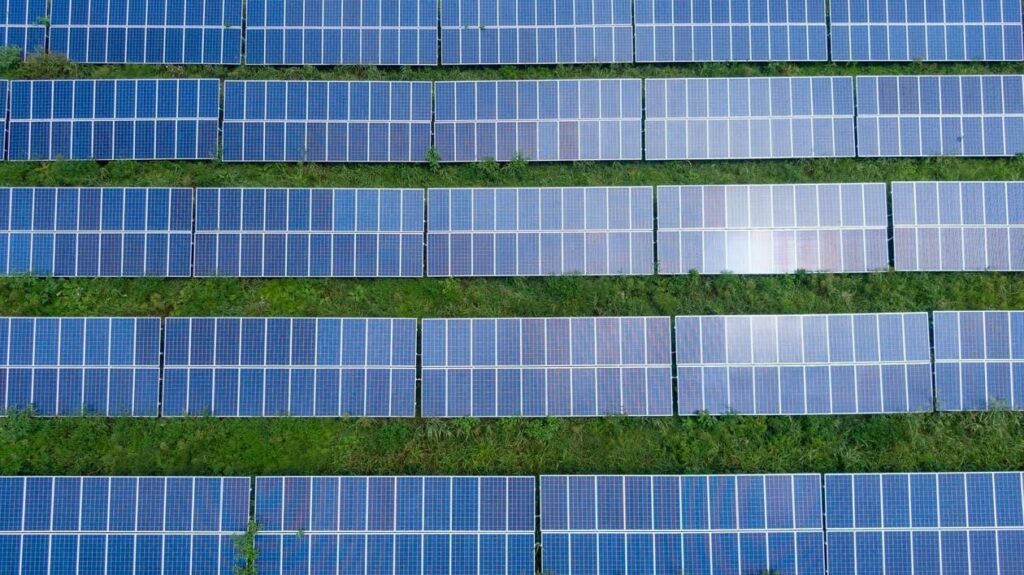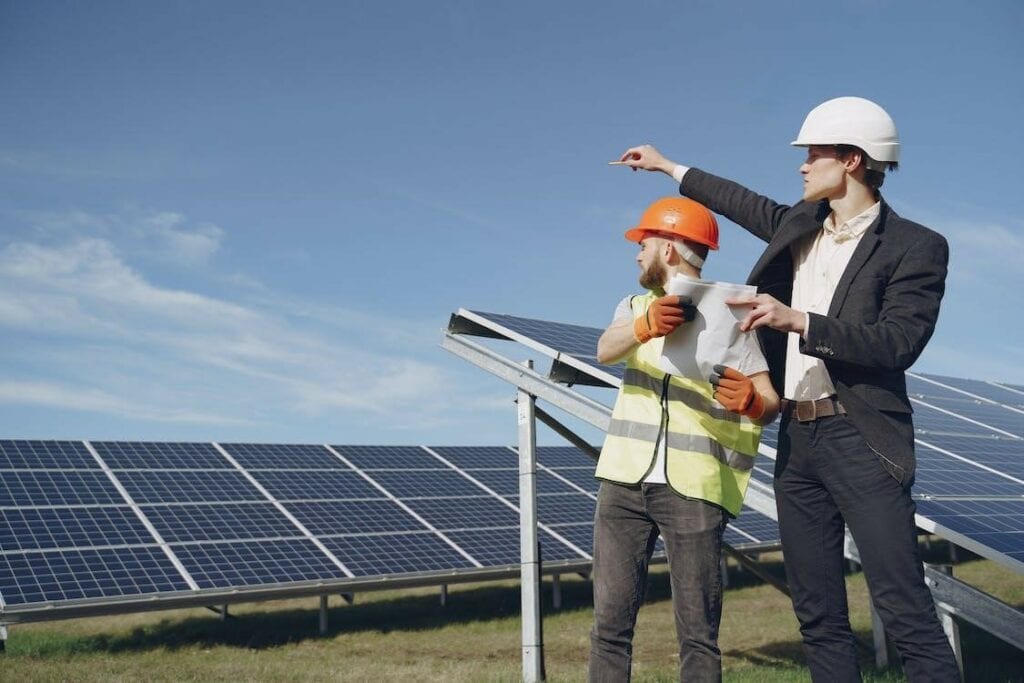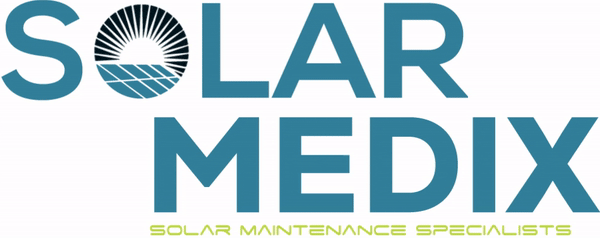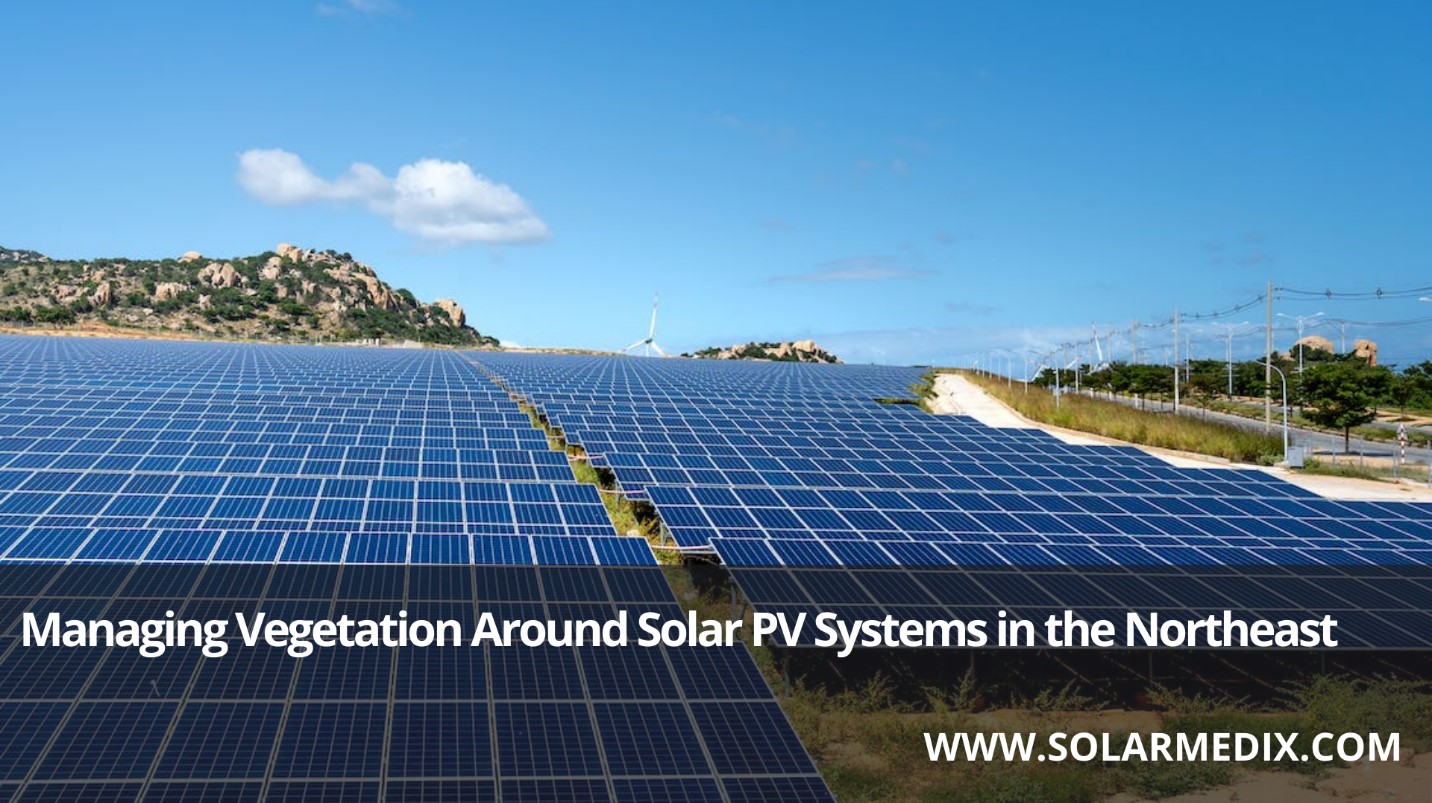There is a lot of natural beauty to enjoy in the Northeast, but that beauty can also pose a challenge for those who choose to reap the benefits of solar power. The abundance of trees and other vegetation means it is vital to keep an eye on the plants and brush around the solar system you have installed.
Whether you are planning a new PV system in the Northeast or simply considering the status and/or maintenance of your existing system, the presence of surrounding vegetation can significantly impact the performance and longevity of your investment. This guide provides an overview of why managing vegetation is essential when installing solar panels and provides some tips that can help make sure this process goes smoothly.
The Impact of Vegetation on Solar PV Performance
The importance of managing vegetation around commercial solar installations and ground-mounted systems is often overlooked. When installing a solar panel array in the Northeast, it is essential to keep vegetation away from the site to allow your solar panels to operate at peak efficiency.
The vegetation around your solar installation or ground-mounted system can significantly impact your solar system’s performance and longevity.
Vegetation can cause some issues, including:
Decreased Performance
The shade from trees and bushes will reduce the amount of energy you can generate. This is because the panels cannot absorb as much sunlight as they would in clear conditions. As a result, your system may not generate enough energy to meet your needs and could even lead to an increased electricity bill if you rely on it for all or part of your electricity needs.
Mice, Insects, Ticks, and Other Critters
There are many pests that can cause problems with solar panels. Mice, insects, ticks, and other rodents all love to live in or near vegetation. The problem is that they can cause severe damage to the panels as they chew through them to get at the wires inside. This will cause the system to lose power, which in turn causes it to stop working altogether.
“Insects can be a nuisance to solar panel installations because of the vast number of insects that can populate if a nest or hive is formed. Bees, ants, and spiders in large masses could not only shade the modules if not kept in check but can make servicing the solar equipment and solar modules more time-consuming for solar service technicians. In the end, this amounts to a hefty bill from the solar service provider. Periodically ensuring that the system is not overrun by insects can have a drastic effect on overall performance and accessibility.
Ticks and other rodents also like areas with vegetation, such as grasslands and meadows. In addition to chewing through wires, they leave feces behind, creating dirt buildup around your solar PV system.
Accessibility
If you have a large amount of vegetation around your solar PV system, then it will make it difficult for the technicians to access it when maintenance needs to be done. This could also lead to longer wait times between maintenance checks.
Soiling
Soiling is another problem that can be caused by vegetation. This is when dirt and other debris get stuck onto your solar panels. Soiling will cause the cells on your solar PV system to not generate as much energy as they normally would. This is because soiling reduces the amount of sunlight that can reach your panels which means less power is generated.
Soiling can damage the solar panels in the following ways:
Feces
Feces from animals such as rodents can also be a significant issue for solar PV systems when mixed with soil. Not only does it attract pests such as mice and snakes, but it also attracts other animals, such as birds, who then defecate on the panels themselves. If these nests are built on the panels, they will cause damage and reduce the efficiency of your system.
Mud
Mud can cause significant damage to solar panel efficiency, especially if it dries out. The mud will cover up elements of the panel that needs to be exposed to sunlight to generate electricity. It will also block any holes used for wiring connections or ventilation.
Grass Clippings
Grass clippings can be another problem for solar panel owners. Grass clippings left on a solar panel can build up and stop the sunlight from reaching the cells.
Increased Water Usage
Your solar system in the Northeast needs to be cleaned regularly to stop dirt from building up, which increases water usage and maintenance costs.
Aesthetics

There is a lot of natural beauty to enjoy in the Northeast, but that beauty can also pose a challenge for those who choose to reap the benefits of solar power. The abundance of trees and other vegetation means it is vital to keep an eye on the plants and brush around the solar system you have installed.
Whether you are planning a new PV system in the Northeast or simply considering the status and/or maintenance of your existing system, the presence of surrounding vegetation can significantly impact the performance and longevity of your investment. This guide provides an overview of why managing vegetation is essential when installing solar panels and provides some tips that can help make sure this process goes smoothly.
The Impact of Vegetation on Solar PV Performance
The importance of managing vegetation around commercial solar installations and ground-mounted systems is often overlooked. When installing a solar panel array in the Northeast, it is essential to keep vegetation away from the site to allow your solar panels to operate at peak efficiency.
The vegetation around your solar installation or ground-mounted system can significantly impact your solar system’s performance and longevity.
Vegetation can cause some issues, including:
Decreased Performance
The shade from trees and bushes will reduce the amount of energy you can generate. This is because the panels cannot absorb as much sunlight as they would in clear conditions. As a result, your system may not generate enough energy to meet your needs and could even lead to an increased electricity bill if you rely on it for all or part of your electricity needs.
Mice, Insects, Ticks, and Other Critters
There are many pests that can cause problems with solar panels. Mice, insects, ticks, and other rodents all love to live in or near vegetation. The problem is that they can cause severe damage to the panels as they chew through them to get at the wires inside. This will cause the system to lose power, which in turn causes it to stop working altogether.
“Insects can be a nuisance to solar panel installations because of the vast number of insects that can populate if a nest or hive is formed. Bees, ants, and spiders in large masses could not only shade the modules if not kept in check but can make servicing the solar equipment and solar modules more time-consuming for solar service technicians. In the end, this amounts to a hefty bill from the solar service provider. Periodically ensuring that the system is not overrun by insects can have a drastic effect on overall performance and accessibility.
Ticks and other rodents also like areas with vegetation, such as grasslands and meadows. In addition to chewing through wires, they leave feces behind, creating dirt buildup around your solar PV system.
Accessibility
If you have a large amount of vegetation around your solar PV system, then it will make it difficult for the technicians to access it when maintenance needs to be done. This could also lead to longer wait times between maintenance checks.
Soiling
Soiling is another problem that can be caused by vegetation. This is when dirt and other debris get stuck onto your solar panels. Soiling will cause the cells on your solar PV system to not generate as much energy as they normally would. This is because soiling reduces the amount of sunlight that can reach your panels which means less power is generated.
Soiling can damage the solar panels in the following ways:
Feces
Feces from animals such as rodents can also be a significant issue for solar PV systems when mixed with soil. Not only does it attract pests such as mice and snakes, but it also attracts other animals, such as birds, who then defecate on the panels themselves. If these nests are built on the panels, they will cause damage and reduce the efficiency of your system.
Mud
Mud can cause significant damage to solar panel efficiency, especially if it dries out. The mud will cover up elements of the panel that needs to be exposed to sunlight to generate electricity. It will also block any holes used for wiring connections or ventilation.
Grass Clippings
Grass clippings can be another problem for solar panel owners. Grass clippings left on a solar panel can build up and stop the sunlight from reaching the cells.
Increased Water Usage
Your solar system in the Northeast needs to be cleaned regularly to stop dirt from building up, which increases water usage and maintenance costs.
Aesthetics
A well-maintained solar PV system will have an attractive appearance that is clean, simple, and professional. Vegetation can make it look unkempt, messy, and unattractive..
If you want to keep your solar PV system looking great, you must maintain it from the beginning. If you do not want to get rid of all the vegetation around your system in one go then consider pruning or mowing it back little by little, so it does not get too thick, wild, and unruly.
Fire Risk
Vegetation is also a fire hazard. If too much vegetation surrounds your solar PV system, a fire could quickly spread to the panels themselves, causing damage or even wrecking them entirely.
It is best to keep trees, bushes, and other plants contained or away from your system so that if there is a fire nearby it will buy you some time to ensure that it doesn’t spread to your solar PV system. In addition, you should ensure that any cables are adequately protected from fire by using cable guards or conduit pipes when necessary.
Commercial Vegetation Management: Why You Should Not Hire an Average Landscaper for Your Solar PV Systems
If you want to install commercial solar panels or ground-mounted systems, there are two options available: hire an average landscaper or a professional landscaper.
Here are some reasons why you should consider the latter:
Lack of Training
Many people think they can handle this work because they have done landscaping jobs before, but this is not always true. The skills required for these projects differ significantly from those involved with typical residential landscaping work. So it is vital to ensure that whoever you hire has been professionally trained in these areas if you want them to perform well on your project.
Inadequate Equipment
The equipment used for commercial solar installation and ground-mounted systems can be costly and cumbersome to transport, so it is crucial to hire someone with access to the right equipment for the job.
If you use an inexperienced contractor who does not have access to professional equipment, there is a good chance that they will end up damaging your solar panels or other components, costing you more money, time, and resources.
Poor Maintenance
The maintenance of vegetation surrounding your solar system after it has been installed should be an ongoing process and not something that is only done once or twice a year. Otherwise, over time the grass will grow tall enough to start blocking sunlight from reaching your solar panels; which will ultimately cause them to produce less energy than they would otherwise produce if vegetation was appropriately maintained throughout the year.
SolarMedix’s Vegetation Management Services and Perks
Our team at SolarMedix is focused on creating a more sustainable future for the world. One of the ways we do this is by offering our clients various vegetation management services around commercial solar installations and ground-mounted systems.
We offer these services because we have the experience, knowledge, and equipment necessary to complete these jobs quickly and efficiently. Our team has been working with commercial solar installations for years, so we know exactly what it takes to keep them running smoothly.
We will come to your site and assess the areas that need to be cleared so your solar panels can operate at their highest efficiency. We will be sure not to disturb any other plant life on your property either; we only clear away dead vegetation or invasive species that would otherwise take up valuable space around your new panels or prevent them from functioning correctly.
Once we have cleared away all unnecessary growth, you can rest assured knowing that your new solar installation will be able to work at its best possible level for a long time to come!
Our comprehensive service plan includes:
- A quote for vegetation management around your solar PV system
- A detailed inspection of the site before we start work
- A plan for clearing away any unwanted plants surrounding your solar panels and inverters
- Regular inspections to see if any new growth has appeared around the site
Some of the upsides of availing vegetation management services from us include:
Safety and Liability Concerns
We understand that your business must comply with local regulations, insurance requirements, and safety standards. This is why we provide safe, compliant, cost-effective solutions to protect your assets from potential liability issues.
Quality Control
Our team performs regular checks of the vegetation management service plan to ensure that it is carried out according to our specifications. This ensures that you receive quality workmanship at all times.
Licensed Professionals

Our certified technicians are trained to work on various types of solar installations. Our technicians are licensed, which means that they have met all required qualifications. We also offer training sessions to ensure that our staff is up-to-date on new technologies and best practices in the industry.
Vegetation Management Strategies
There are some strategies that we use to manage vegetation around solar systems. The most common approach is allowing native grasses and ground cover to grow naturally around the system while removing invasive species such as weeds. This approach helps improve the project’s aesthetics and prevents soil erosion from wind or precipitation events.
In some cases, this approach may warrant periodic mowing or other maintenance activities to keep grasses at an acceptable height for aesthetic reasons. In some cases, however, even native grasses can become invasive if left unmanaged — particularly where there is ample sunlight and water supply for growth. In these cases, herbicides may be necessary to control unwanted growth underneath solar panels or on top of concrete pads that support mounting structures for panels.
Another common strategy is mulch or other material to suppress weed growth without harming native species. We will choose the best strategy for your solar arrays based on many factors, including the landscape and the vegetation in your area.
Vegetation Management Cost
Our vegetation management cost ensures our clients get the most out of their investment. We manage the growth of any vegetation obstructing your solar panels or other equipment, allowing us to secure optimal performance from your system.
We can work with you to develop a customized plan for vegetation management around your solar PV system. We will also help you choose a maintenance schedule based on your needs and budget.
Hire an Expert
Now that you know what you are dealing with, finding a solution to the issues at hand is not all that difficult. Using the guide above, you should not let vegetation around solar PV systems get out of control.
Got questions? Looking for guidance?
Our company has serviced the New York and New Jersey areas for the past two decades in solar panel repair and maintenance. We can provide the guidance you need. You can reach out to us at 732-785-4814 or book a consultation online.













